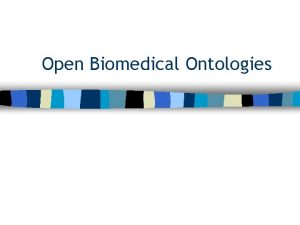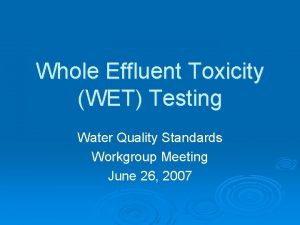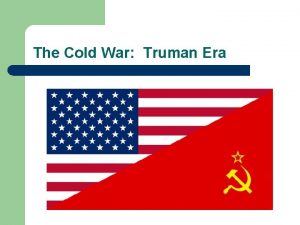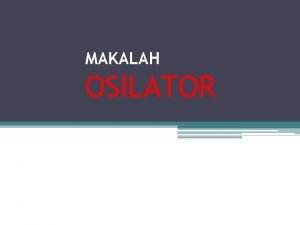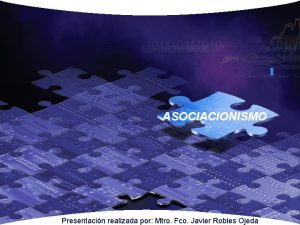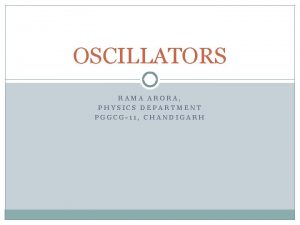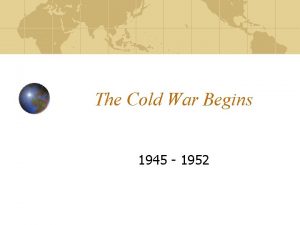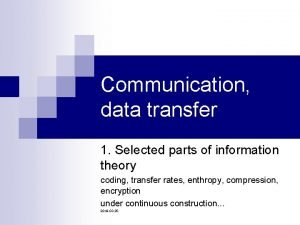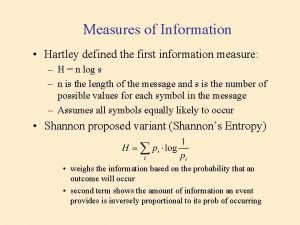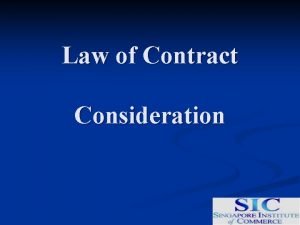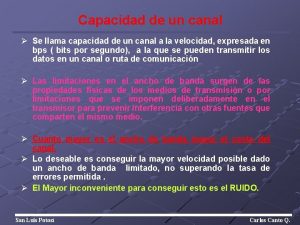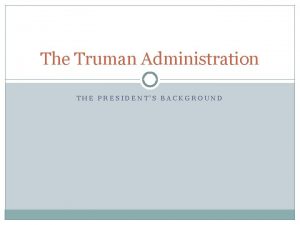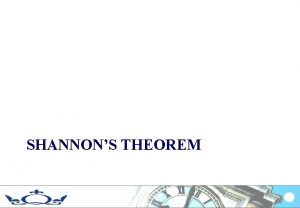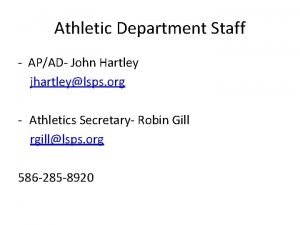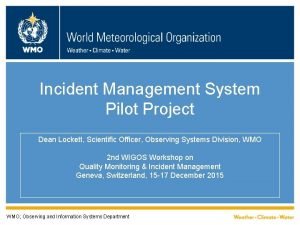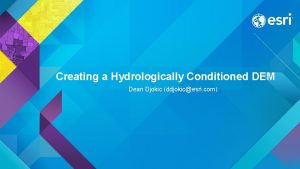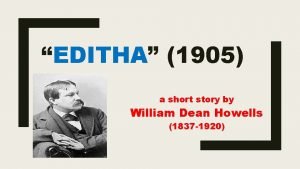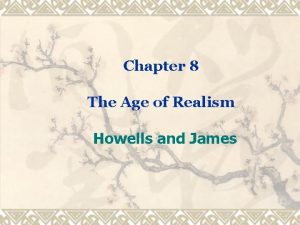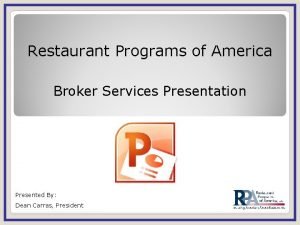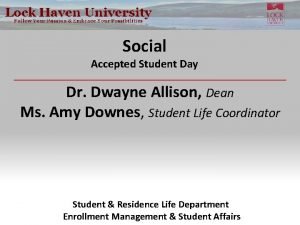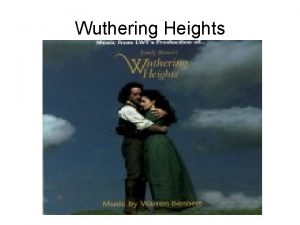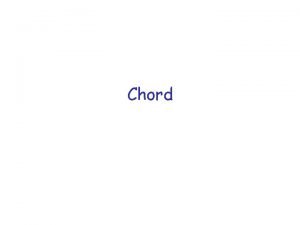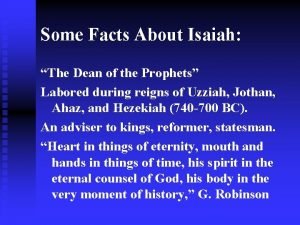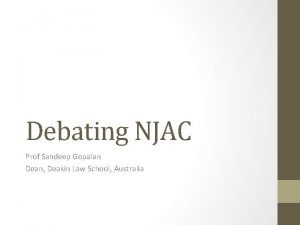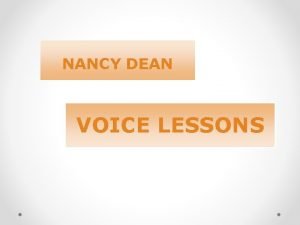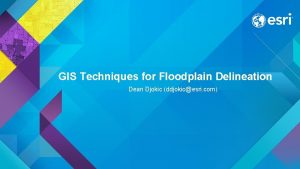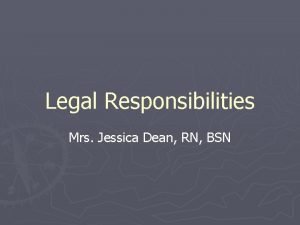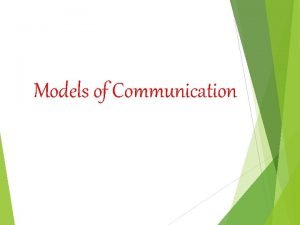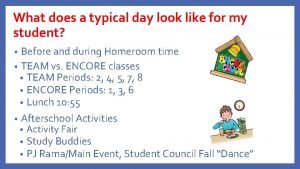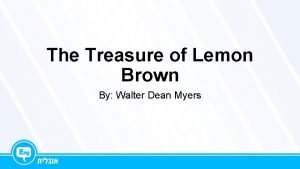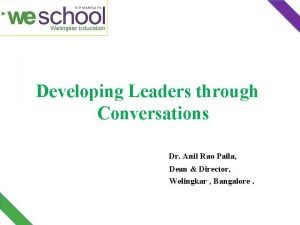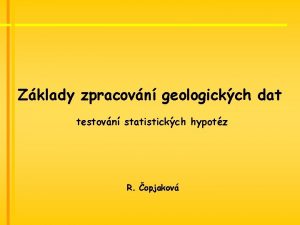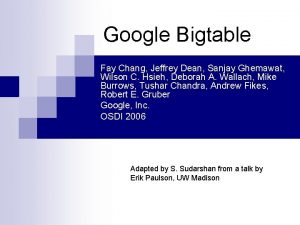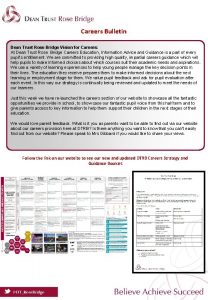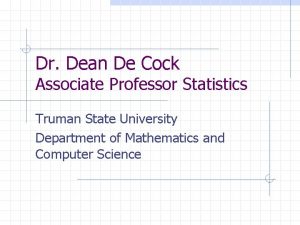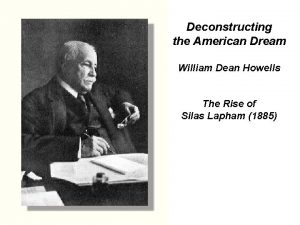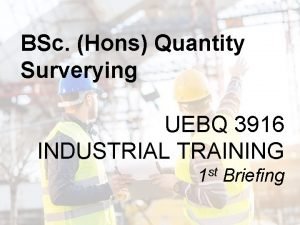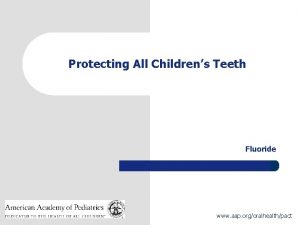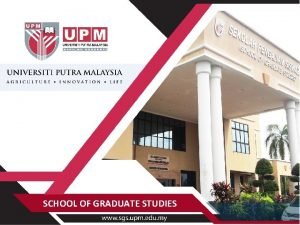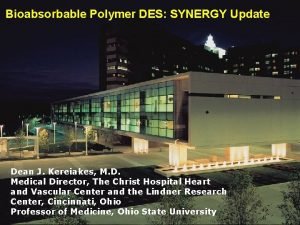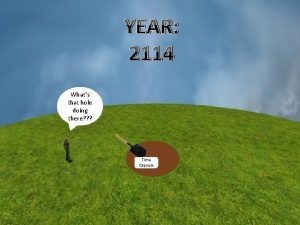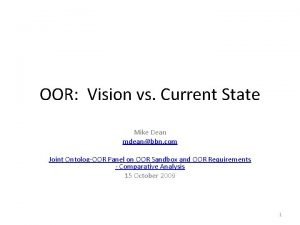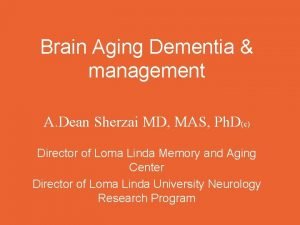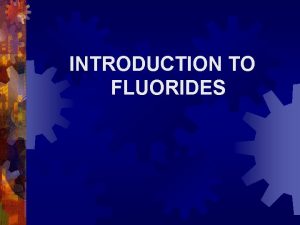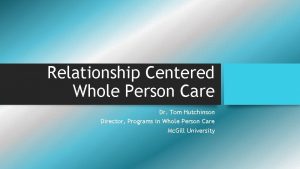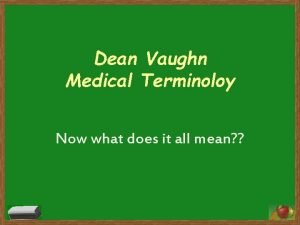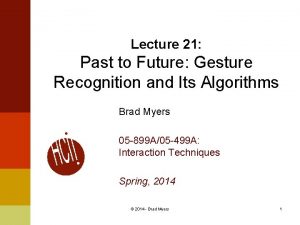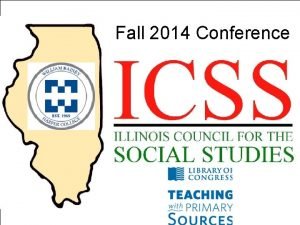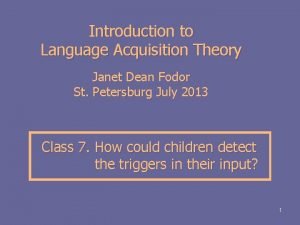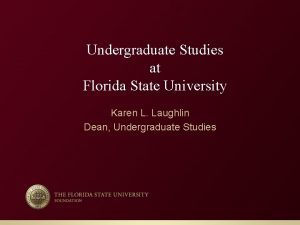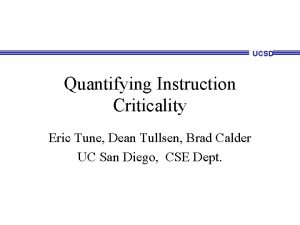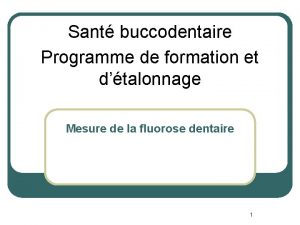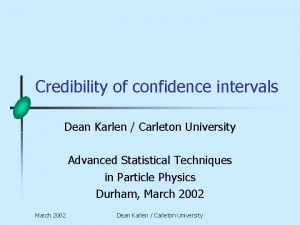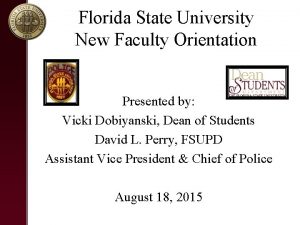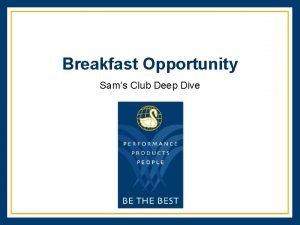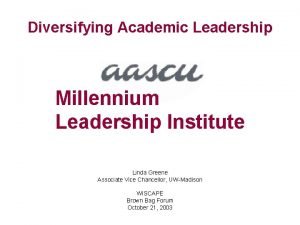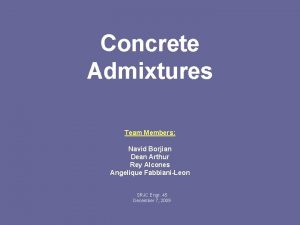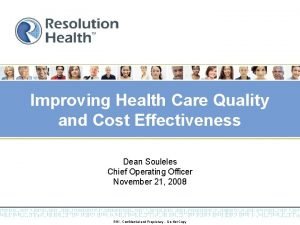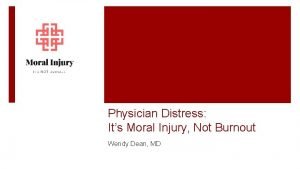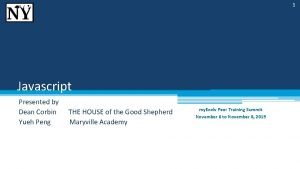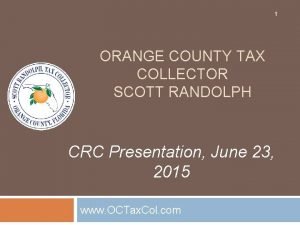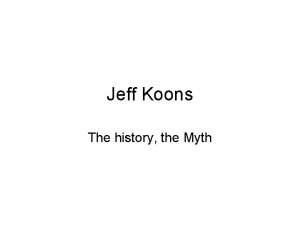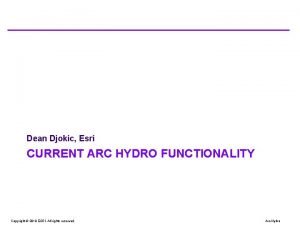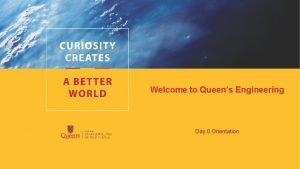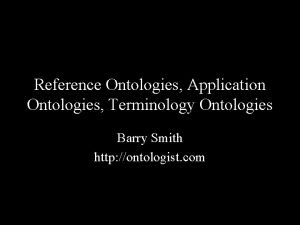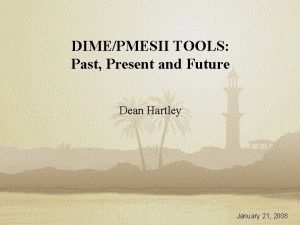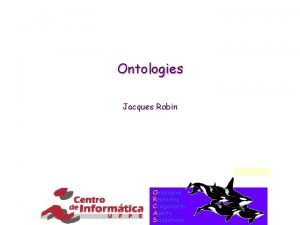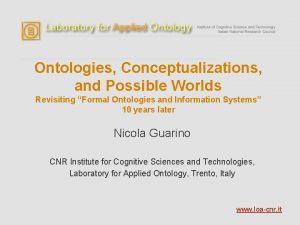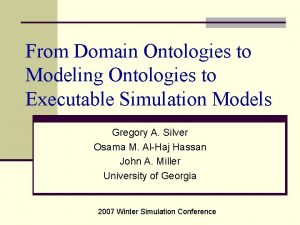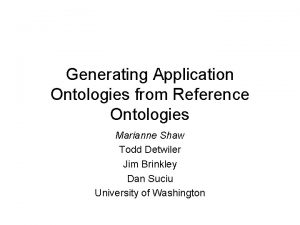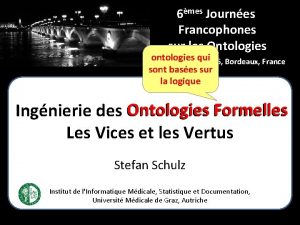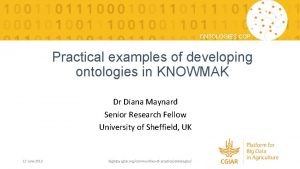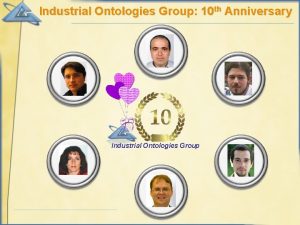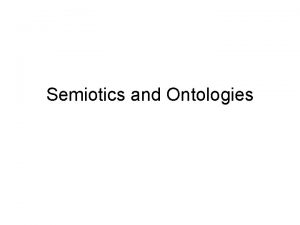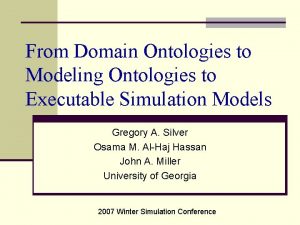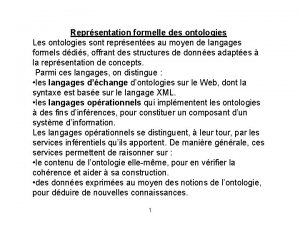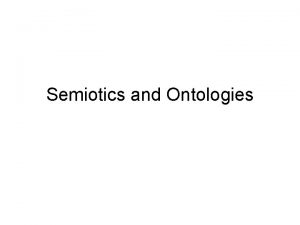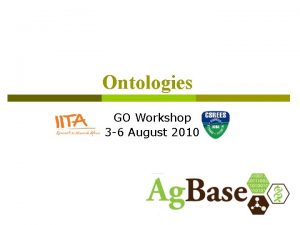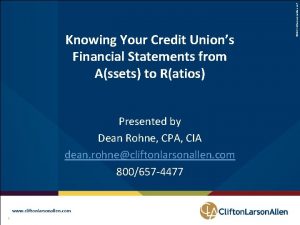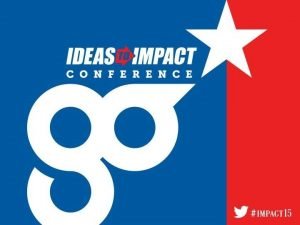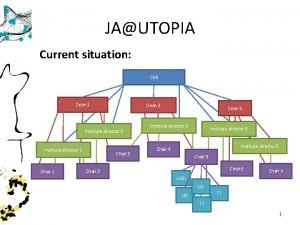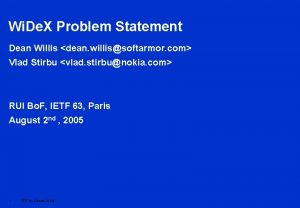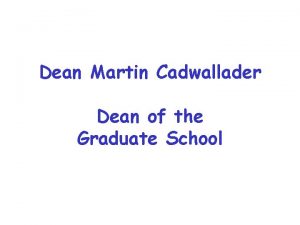IW Ontologies Dean S Hartley III Hartley Consulting






























































































- Slides: 94

IW Ontologies Dean S. Hartley III, Hartley Consulting Lee Lacy, DRC Paul Works, TRAC INFORMS National Meeting, Charlotte, 11/13/11

BLUF • Irregular Warfare Ontologies – Controlled vocabularies – Basic relationships within Operational Environment – Implemented in Web Ontology Language (OWL) • Elements – – Actions Actors Environmental (natural & human, physical & conceptual) objects Metrics (state variables) describing the status of 1 st three sets • Metric Ontology – – Begins with taxonomy: PMESII + kinetics + natural environment Allows metric types to be in multiple categories “Comprehensive” list of ~400 metric types Adds links to six Lines of Effort (LOEs) 2

Ontology Development Process

IW Metric Ontology Development Project Activities and Deliverables • Producing IW Metrics Ontology – – • Created through – – • linking LOEs to PMESII Metrics Workshops Literature review Tools review Expertise Developing – – – IW definitions Ontology definitions LOE definitions PMESII definitions Metric definitions Operational knowledge TRAC contracted with DRC and Hartley Consulting to develop an IW Metrics ontology 4

Scope Domain - Context Diagram Metrics can be thought of as state variables that describe the Operational Environment. 5

Ontologies • Operational Environment (OE) Ontologies – 397 elements (some in more than one ontology) – Actor Ontology – 68 elements – Environment Ontology – 150 elements – Action Ontology – 195 elements • Actor Ontology Organization – Actor Categories and Sub. Categories – PMESII+ Categories and Sub. Categories • Environment Ontology Organization – Environment Categories and Sub. Categories – PMESII+ Categories and Sub. Categories • Action Ontology Organization – PMESII+ Categories and Sub. Categories • Metric Ontology – Derived from the OE Ontologies – 456 elements – PMESII+ Categories and Sub. Categories – Lines of Effort (LOEs) Categories 6

Operational Environment Ontologies

Actors Ontology Each actor has both an actor type and belongs to one of the PMESII categories

Actors Ontology Examples of individual and significant group actors

Actions Ontology Each action belongs to one or more of the PMESII categories

Actions Ontology Examples of actions with multiple connections

Environment Ontology Each environmental element has both an environment type and belongs to one of the PMESII categories

Environment Ontology Examples of two environmental elements

Metric Ontology of the State Variables

Metric Ontology Elements • State variables describe the Operational Environment – Actors – Actions – Environment Affects Described by • Metrics are derived from the Operational Environment ontologies’ elements Metric – “Train teachers” Includes • Action: state variable giving the impact of the action – “Migrants” • Conceptual Environment: state variable describing the extent of existence of migrants • Significant Group Actor (if so modeled): state variable describing the characteristics of the group Perceived by – “Epidemic” • Action: state variable giving the impact of the action • Physical Actor (if so modeled): state variable describing the extent of the epidemic – “Flood/Tsunami” • Environmental element ): state variable describing the extent of the flood/tsunami • Action (if so modeled): state variable describing the impact of the action • Physical Actor (if so modeled): state variable describing the characteristics of the flood/tsunami Action Environment Actor Performs 15

Creating Metric Types Actor Ontology Metric Ontology Action Ontology Environment Ontology

Metric Properties 17

Example Mapping of Political Environment to Associated Metric Types Governance. Rating Corruption. In. Law. Enforcement. Rating Connections to secondary PMESII Subcategories are not shown 18

LOEs Selected for the Ontology 19

Metric Ontology Class/Property Design Line of Effort Ontology State Variables Ontology TRAC IW Metric Ontology Operational Environment Ontology Metrics Employed Ontology Sample Instance File 20

Beyond the Ontology

Model of ~400 Metric Types + DIME Actions 1. Rebuild roads 2. Road capacity created 2. Road jobs created 2. Road $ investment 3. HN road capacity 3. HN acceptable jobs 3. HN foreign investment 1. LOE 5 Endstate Economy & Infrastructure 2. HN Economy 2. HN Infrastructure

Using the Ontologies • Create Use Cases – Use lists Done for TRAC IW TWG • Identify what should be modeled: need list of metric types • Identify what data are needed for making decisions: need list of LOE related metric types • Enhance communication and analyze results of model execution: need list of metric types related to model – VV&A support: need Operational Environment ontologies – Model support: need “model” connections added to ontology – Query ontology for …TBD • Implement Use Cases – – – Identify what can be done with current capabilities Identify what new capabilities are needed Group capabilities by Use Case Estimate costs for creating capability groups Rank potential follow-on projects 23

One Use Case Actor Ontology Metric Ontology Select actor based on nature Action Ontology Model Environment Ontology Select action based on LOE and desired impact Observe impacts based on model

From the hills of East Tennessee Questions? Dr. Dean S. Hartley III Hartley Consulting DSHartley 3@comcast. net

BACKUP SLIDES 10/30/2021 Ontology Design 26

Citations Doing. Windows Bradd C. Hayes and Jeffrey I. Sands, Doing Windows: Non-Traditional Military Responses to Complex Emergencies. CCRP, Washington, DC. 1998. ISSM Dean S. Hartley III, Operations Other Than War (OOTW) Flexible Asymmetric Simulation Technologies (FAST) Prototype Toolbox: ISSM v 4. 00 Analysts' Guide. DRC, Orlando, FL. 2006. VV&A Tool Dean S. Hartley III, DIME/PMESII VV&A Tool (Software). Hartley Consulting, Oak Ridge, TN. 2009. OCRS Matrix Office of the Coordinator for Reconstruction and Stabilization, "Post-Conflict Reconstruction Essential Tasks. " US Dept of State, Washington, DC. 2005. http: //www. crs. state. gov/index. cfm? fuseaction=public. display&id=10234 c 2 e-a 5 fc-4333 bd 82 -037 d 1 d 42 b 725 MPICE Michael Dziedzic, Barbara Sotirin, and John Agoglia, Measuring Progress in Conflict Environments (MPICE): A Metrics Framework for Assessing Conflict Transformation and Stabilization, Version 1. 0. US Institute for Peace, Washington, DC. 2008. Hilson Roger Hilson, et al. , Requirements for a Government Owned DIME/PMESII Model Suite. Office of the Secretary of Defense Modeling & Simulation Steering Committee, Washington, DC. 2009. IWDecomp 2009 IW Decomposition Analytic Strategy, TRAC, Overview Briefing for IW WG, 6 January 2009 Corruption Dean S. Hartley III, "Corruption in Afghanistan: Conceptual Model, " 21 August 2010 Metrics v 3. xls from TRAC PRIME Taxonomy from SRI HSCB Taxonomy from Gary Klein, Mitre 24 Jan 2011 IW Metrics Ontology 27

File Contents

Operational Environment Elements (DL 1) 10/30/2021 Ontology Design 29

Metrics Types (DL 2) 10/30/2021 Ontology Design 30

Mapping Operational Environment to Metrics (DL 3) 10/30/2021 Ontology Design 31

Sample Metric Values (DL 8) 10/30/2021 Ontology Design 32

Metric Type (Attribute) Properties (DL 9) Property Name in Ontology describes. Op. Env. Elt Description identifies the PMESII category by indicating the element of the Operational Environment being described impacted. By. LOE identifies an LOE whose execution impacts the values of metrics of this type configuration management information (initially just a version number in a string) version. Info (OWL annotation property) classification. Level initially a string indicating level (e. g. , “Unclassified”) (eventually BAH’s ISM 3 ontology properties) associated. HSCBtaxonomy. Element descriptor identifying associated HSCB taxonomy 10/30/2021 Ontology Design 33

Metric Value (Qualifier) Properties (DL 10) Property Name in Ontology Description subject. Organization subject. Location organization being described by the metric value location being described by the metric value trust. Level related. COCOM trust level with 10 being absolute trust and 0 being no trust COCOM related to metric value unit. Of. Measure metric. Value related. Do. SRegional. Bureau related. Do. SFunctional. Bureau responsible. Organization collection. System. Used source. Metric. Value value. Representation initially a string identifying the units of measure for the metric value itself name of related Department of State regional bureau name of related Department of State functional bureau organization responsible for geographic area identification of system used to obtain data reference to another metric value used to derive the metric’s value explanation of value meanings (e. g. , data type or Likert scale from 1 -5 with explanation of values) Beginning of time period being described End of time period being described Indication of datatype used to describe metric value yes indicates the value was derived from other values date that metric value was collected yes indicates that the metric value was a transformation of another metric value initially a string indicating source of information (e. g. , “Wikipedia”) date on which metric value was obtained beginning. Date. Time ending. Date. Time value. Datatype derived. Metric date. Collected transformed. Metric obtained. From date. Obtained 10/30/2021 Ontology Design 34

Dublin Core Properties Property Name in Ontology contributor Description An entity responsible for making contributions to the resource. coverage The spatial or temporal topic of the resource, the spatial applicability of the resource, or the jurisdiction under which the resource is relevant. An entity primarily responsible for making the resource. creator date description A point or period of time associated with an event in the lifecycle of the resource. An account of the resource. format The file format, physical medium, or dimensions of the resource. identifier An unambiguous reference to the resource within a given context. language A language of the resource. publisher An entity responsible for making the resource available. relation A related resource. rights Information about rights held in and over the resource. source A related resource from which the described resource is derived. subject The topic of the resource. title A name given to the resource. type The nature or genre of the resource. 10/30/2021 Ontology Design 35

HSCB Taxonomy Items (DL 4) 10/30/2021 Ontology Design 36

Metrics to HSCB Taxonomy Mapping (DL 5) 10/30/2021 Ontology Design 37

What is Ontology?

Ontologies Provide Benefits • Textual descriptions are ambiguous • More formal representations enable more automated solutions • Ontologies form a type of “compromise” between human readable text and computer processable data • Relationships and restrictions between classes help support inferencing and “discovery” of additional facts From: (Uschold, 2003) February 7 -10, 2011 HSCB Focus 2011 39

What is an Ontology? • Gruber Definition – An ontology is a “formal specification of a conceptualization” – That is, a formally described, machine readable collection of terms and their relationships expressed with a language in a document file • Computer science literature differentiates – Terminological components (Tbox) – Assertional components (Abox) Domain Ontology describes modeled by Class 1 Class 2 Class 4 Class 5 Class 3 Class 6 Class 7 Conceptualization Tbox Ontology February 7 -10, 2011 specified by compliant with Abox Fact Instances HSCB Focus 2011 40

Semantic Spectrum From: (Uschold, 2003) 24 Jan 2011 IW Metrics Ontology 41

Knowledge Representation Spectrum From: Deborah L. Mc. Guinness. "Ontologies Come of Age". In Dieter Fensel, Jim Hendler, Henry Lieberman, and Wolfgang Wahlster, editors. Spinning the Semantic Web: Bringing the World Wide Web to Its Full Potential. MIT Press, 2003. 24 Jan 2011 IW Metrics Ontology 42

Naming the Problem • • End-state goals Status vector Actions to change status Interactions of above Goal 2 Noun 1 Noun 2 • Describe with taxonomy • Add properties • Interactions are a model Goal 3 Goal 1 Adjectives Numbers Noun 3 Noun 4 Noun 5 Adjectives Numbers Taxonomy Adjectives Numbers Interactions Model Adjectives Numbers Verb 1 Verb 3 Verb 2 IW Metrics Ontology 43

Ontology Concepts • Information representation – Class – Property – Individual • Class Property Individual Relations between representations Individual – Is an instance of (membership) – Has value for – Restrict (helps define class) • Relations within representations – – Synonymy (similar or identical) Antonymy (contrast or dichotomy) Hyponymy (is-a) Meronymy (part-of)/ Holonymy (contains) Class restrict Property = = Pie Dessert Pie 24 Jan 2011 has value for is an instance of Cake Crust Filling IW Metrics Ontology 44

Ontology Languages • Concepts derived from Description Logics • Represents an evolution (not revolution) in representing information • Web Ontology Language – OWL standardized by W 3 C Derived from: (Lacy, 2005) 24 Jan 2011 IW Metrics Ontology 45

Ontology Layers From: (Navi, 2004) 24 Jan 2011 IW Metrics Ontology 46

Lines of Effort (LOEs)

LOEs, Sub-Tasks, and Endstates • Taken from FM 3 -24. 2, pg 4 -8, 21 April 09 • Sub-Tasks are Actions at a larger scale than our DIME+ LOE 24 Jan 2011 Subtasks LOE Endstate Workshop Activity #5 48

LOEs Metric Types • Step 1: Identify DIME actions – FM 3 -24. 2 calls out subtasks for each LOE – Each subtask is clearly associated with one or more DIME actions – Several DIME actions are also implied (e. g. , force security) • Step 2: Identify DIME Mo. Ps – Measures that are clearly associated with performing the given action, regardless of situation or modeling choices – Measures are inputs or direct outputs (e. g. , • • $ invested jobs created number of diplomatic actions road capacity built • Step 3: Identify additional direct Metrics – Requires a model of what interacts with what – Include metric types that are directly affected by DIME Mo. Ps • Step 4: Work backward from LOE Endstates – Requires a model – Start with LOE Endstates and include metric types that directly effect them – Continue backward 10/30/2021 Ontology Design 49

Metrics Mapped to LOEs 10/30/2021 Ontology Design 50

Describing the Elements

Describing a Metric Attributes of a Metric: – – – – Name Definition Units Geographic association Author References Time-based • Metrics become “first class” reusable well-defined objects in their own right that belong to classes and not just attributes of a objects being described (less tightly coupled) • Assertions can be made to describe the attributes of a particular metric value February 7 -10, 2011 HSCB Focus 2011 52

Representing Perceived Metrics UML can be used to describe relationships between classes, properties, individuals/instances, and property values February 7 -10, 2011 HSCB Focus 2011 53

How do we know what happened? • Indicators … are not effects • Better to be observable than not, but “not seen” does not mean “not there” • Inference from indicator to effect is “reverse direction” Win the War Acceleration of Straggler Count Traffic Density Units in Bivouac Destroy Will Stop Second Echelon River Clear Carpet Bomb (Isolate the Battlefield) Drop Leaflets Prevent River Crossing (Deny Access) Objective/Task/Activity Effect Desired Indicator Destroy Br 1 DMPI 1 24 Jan 2011 DMPI 2 Destroy Fuel Res. Destroy Br 2 Source: (Dr. Maris “Buster” Mc. Crabb’s “Effects-based Operations: An Overview”) IW Metrics Ontology 54

Observable Metrics for Deriving LOE Endstate Goal Mo. PE = LOE Endstate Mo. FE 1 Mo. P 1 DP 1 Mo. FE 1 Mo. E 2 Mo. P 2 Mo. E 3 Mo. P 3 Metrics depending on DIME actions and other state variables Mo. E 4 Mo. P 4 DP 2 Mo. P 5 DP 3 Dime 1 Dime 2 derived from Mission High-level metrics impacting goal derived from LOE M 1 based M 2 Monly 3 M M 5 Mo. Ps on 4 DIME The other state variables DIMEI 1 action I 2 metrics I 3 … I 20 Observable metrics DIME actions Required to compute goal value

How are State Variables Calculated? • Some state variables may be observed directly • Most state variables will be calculated – Some state variables will be calculated from a single indicator/metric – Many state variables will be calculated from several indicators/metrics • Most indicators/metrics will require reformatting • Example: “Agriculture Sector Strength” – – 24 Jan 2011 Indicator: Crop Production Indicator: Meat Production Combination: (CP+MP)/2 Scaling Workshop Activity #7 56

Crop Production • Metric: Hectares of permanent crops per 1000 people • Data from 175 countries • Scaling equation to yield nearly normal distribution – Scaled. Crops = 2*(log 10(hectaresper. Kpeople)-1. 1) 24 Jan 2011 Workshop Activity #7 57

Meat Production • Metric: Annual metric tons of meat person • Data from 150 countries • Scaling equation to yield nearly normal distribution – Scaled. Meat = 2*(log 10(Met. Tonspercapita)+1. 9) 24 Jan 2011 Workshop Activity #7 58

Agriculture Sector Strength • First step – Avg. Crops&Meat = (Scaled. Crops+Scaled. Meat)/2 • Second step: Calculate current figure for the country (use equations) • Third step: Find the difference in standard deviations of the current figure from the international mean (a + or – number). Use this to represent the estimate of the current Agriculture Sector Strength • Note: this is a model, not a fact 24 Jan 2011 Workshop Activity #7 59

How are DIME Variables Calculated? • • DIME variables are both action variables and state variables As state variables, DIME variables represent the state of the action As action variables, DIME variables directly impact the environment, changing some state variables DIME variables are represented – Usually in two parts, an amount of work and an amount of work needed, that can be converted into a fraction – Sometimes as a fraction of completion, that can be scaled – Sometimes as a scaled variable, e. g. , -3 to +3, representing “horrible” to “fantastic” total capability achieved • • 24 Jan 2011 Choosing the proper denominator is critical E. g. , Electricity Production Workshop Activity #7 60

Rebuilding Electrical Production • • • In Iraq, electrical production capacity was destroyed in the war Reconstruction requirements were massive and required intermediate goals A construction project might involve building a megawatt generator – Beginning the project would involve purchasing materials and hiring and paying people – During the project, more materials would be purchased and people would continue to be paid – At completion, increased electricity would be produced, no new materials would be purchased and people would be laid off • Project DIME variables – A DIME variable could be created that consisted of fraction of the project completed – Alternatively, a DIME variable could be created that consisted of amount of electrical production generated versus total capacity of the project • A broader view would consider all construction projects in a phase – Create a DIME variable consisting of total work/total phase work – Create a DIME variable consisting of total electrical production/total electrical production desired from the phase • • • A still broader view would consider all construction to restore production to pre-war levels The broadest view would consider all construction to create capacity that brings Iraq into a better than 3 rd world status Note that – Red forces might destroy some work in progress, what does this do to DIME variables? – Red forces might destroy some electrical production capacity that was undamaged or completed in a previous project, what does this do? • 24 Jan 2011 Which DIME variables are appropriate? Workshop Activity #7 61

Prices as Metrics • Price is determined by Supply, Demand, particular item, & other factors • For an item, Supply & Demand are usually dominant – Price is proportional to Demand/Supply – Examples • Reduction in drug supply – – – Crop eradication Drug interdiction Capture or killing drug operatives Raises price – Metric says price increase is good May increase violent competition • Reduce demand – – Education of buyers Law enforcement against buyers Lowers price – Metric says price decrease is good May reduce competition as high price producers leave market • Do both – Conflicting Metric interpretation • Measuring Supply and Demand directly is preferable – just harder

Context Diagram made Concrete You (the Actor) Cook (the Action) a Turkey in an Oven (collectively, the Environment) and decide when to take it out with State Variables: 24 Jan 2011 Workshop Activity #6 63

Example: Cooking a Turkey Mo. M: Turkey is done n ve n: of O tio Ac Indicator: Meat Temperature ut eo Ac tio n: n ve O in Ta k t Pu Indicator: Cooking Time Process: Cook 24 Jan 2011 Workshop Activity #6 64

How Do We Get This Picture? • • • Taking a raw turkey and putting it in the oven (almost always) results in “turkey is in oven”-state: fact Cooking the turkey (almost always) results in “turkey in oven is browner”-state: fact Taking a “cooked” turkey out of the oven (almost always) results in “brown turkey out of oven”-state: fact Desired Measure of Merit is “turkey is done”-state: given Connections among – – • • 24 Jan 2011 “cooking time” and “turkey is done” “meat temperature” and “turkey is done” “cooking time” and “meat temperature” model – subject to verification & validation Most Mo. Ms are not directly observable, require models using observable indicators More complex Mo. Ms use models with sub-Mo. Ms and many indicators Workshop Activity #6 65

Modeling Alternatives • Case 1: Situational Awareness – Monitor the indicators, when they say “go”, intervene and eat the turkey – Requires analysis to develop a model of the relationship between the indicators and the Mo. M – The resultant model is (relatively simple), connecting observations of reality with the inferred Mo. M value • Case 2: Simple Control Theory Model – Set the temperature, timer & thermometer, monitor for deviations. If the guests are late, turn down the temperature setting. If the guests are early and hungry, turn up the temperature setting. – Develop model of the relationships among the controls and the indicators, as well as a model between indicators and Mo. M – The resultant model is more complex than in Case 1; however, it still has simplifications. E. g. , in IW case, Red actions and their results can be treated as indicators • Case 3: Complex Model – Compute which controls actions will give the best results as the situation changes. – The relationship models need to be more complex and accurate, taking into account actor and action interactions and dynamics. – The resultant model is very complex. 24 Jan 2011 Workshop Activity #6 66

Ontology Implementation

Ontology Development Process February 7 -10, 2011 HSCB Focus 2011 68

Operational Environment Decomposition Operational Environment Political Environment Military Environment Economic Environment Conflict Government Security Other Basic Needs Governance Politics Rule of Overview Law Social Environment Education Movement Health Information Environment Infrastructure Environment Kinetic Environment Natural Environment Atmospherics Other Earth, water, Geometrics & other Safety Logistics General Media Opinions Operations Business Agriculture Crime Energy Finance Government Jobs Other 10/30/2021 Actions Actors Environment Damage/ Attrition Government Energy Transport Education Health C 4 I Media Water Ontology Design 69

High Level Ontology Context Mapping of metrics to LOEs (possibly more than one) (DL 7) Mapping of metrics to PMESII categories (possibly more than one) (DL 3) List of operational environment elements (DL 1) List of metric types (DL 2) List of LOEs (DL 6) List of sample metrics values (DL 8) 10/30/2021 Ontology Design 70

Ontology and Instance File Relationships 10/30/2021 Ontology Design 71

OWL Encoding Evolution 10/30/2021 Ontology Design 72

Sources of Concepts

Literature • General concepts and relationships – Doctrine (e. g. , Joint Pubs, Army FMs) – Workshops (MORS, NDU, HSCB) – Books, articles and presentations • Initial sources for metrics and taxonomy – Hayes & Sands Doing Windows: 119 – Interim Semi-static Stability Model (ISSM): 195 – DIME/PMESII VV&A Tool: 285 • Confirmatory and Additional metrics and taxonomies – – – – – • 24 Jan 2011 HSCB Taxonomy: 345 Metrics v 3: 226 OCRS Matrix: 217 NDU Corruption Workshop: 131 IW Decomp 2009: 99 MPICE: 62 PRIME Taxonomy: 59 Hilson: 54 Others Total metric types 415 IW Metrics Ontology 74

Why We Need Authoritative References and Resources • Ground concepts in vetted terms and definitions whenever possible • Vetted terms and definitions have evolved from collaborative development and review • Support provenance / pedigree of information in the ontology 24 Jan 2011 75

Descriptive Requirements (Actions, Effects, and Overarching) Source: Smith, Young (2009) Requirements for a Government Owned DIME/PMESII Model Suite” (N 81) IW Metrics Ontology 76

LOE Typical Tasks From FM 3 -24. 2 24 Jan 2011 Workshop Activity #5 77

ISSM We get our initial meronymy connections here, but not our hyponymy connections IW Metrics Ontology 78

Conflict Ecosystem © David J. Kilcullen, 2007 from “Counterinsurgency in Iraq: Theory and Practice, 2007” IW Metrics Ontology 79

Operator’s View Source: (Kiefer, 2004) • Performing tasks is a science – achieving desired effects is an art. • The commander’s CONOPs contains the broad flow of tasks to assigned units intended to achieve the desired effects and the required endstate. It is a theory that is tested in execution against an adversary and his CONOPs. Tasks Battlespace Effect (+/-) Effect Adversary (+ ) Environment (-) (+ ) Friendlies Effect (-/+) Effect Tasks Capability • Means + Ways • Freedom of Action • Potential to Perform Tasks 24 Jan 2011 Conditions • Affect Quality / Capacity of Task Performance Capability • Means + Ways • Freedom of Action • Potential to Perform Tasks IW Metrics Ontology 80

Data Architect’s View • State = set of elements + their attributes at a moment in time Source: (Kiefer, 2004) • Actions change state by changing attributes (if conditions permit) • A State Engine increments time; examines all elements and attributes; triggers actions and reactions whose state conditions are met; degrades or prohibits actions as limited by states; tests susceptibility state conditions of objects and, if met, changes attributes as a result of actions & reactions. Interaction Space Object State 0 Attributes Environment State 0 Attributes Agent State 0 Attributes Actions • • Object Susceptibility Elements & Attributes Reaction Queue Reaction Triggers Action Susceptibility Standards 24 Jan 2011 Environment • Elements & Attributes • Action & Reaction Queue • Action Standards • Action Conditions • • Agent Capability Elements & Attributes Action Queue Action Triggers Action Performance Standards IW Metrics Ontology 81

Control Influence IO Crime Corrupt Influence Corrupt Acts Red Force Blue Force Manpower Flow Funds Flow Illicit Funds Goods & Services MOM Calculation External Goods & Services Entity Model NGO System ROL Crime Economy Organized Crime Common Crime Labor Pool Stable, Growing, Licit Economy Drug Economy Dispute Resolution Jirga Sustained Licit Growth Rule of Law Cops Ability to Incorporate Bank Accounts Dispute, Detain, Trial, Jail Shura Markets & Customers Illilicit Funds Corrections Right of Ownership Corruption In Business Courts ROL Accounts Access to Capital Loans Business Enablers Economic Development Economic Enablers Labor Pool Petty Corruption In Law Enforcement Public “Rage” Taliban Courts De-legitimize ROL Education & Social Services Bad Govt Behavior Taliban Accounts External Pakistan Iran, Others Taliban Insurgent Activity Attack Supplies & Services Corruption In Central Authority National/Provincial Governance Labor Pool Corruption In Public Office District-Level Governance Protect Corruption In Military Government Accounts Choice Process MOMs Supplies & Services Rural Govt Legitimacy National Govt Legitimacy Perceived Security Local Security ISAF Security Re-legitimize ROL ISAF Information Operations Afghan National Police Support Attack Emphasize protection Labor Pool Afghan National Army Taxes Urban Govt Legitimacy Security Corruption Corrupt Funds Governance Community Council Urban-Level Governance People’s Funds Population Taliban Information Operations Transport & Infrastructure Supplies & Services Labor Pool Policy Village-Level Governance Non-Taliban Populace Taliban People Emphasize power Corruption In Social Services Materials Access to Energy Corruption Reintegration Economic Status Goods & Services Drug Crime Supplies & Services 24 Jan 2011 Illicit Economic Status Supplies & Services Security Accounts External Funding Local Funding Supplies & Services Labor Pool External Population IW Metrics Ontology 82

Control Influence IO Crime Corrupt Influence Corrupt Acts Red Force Blue Force Manpower Flow Funds Flow Illicit Funds Goods & Services MOM Calculation External Goods & Services Force Model NGO System ROL Crime Economy Organized Crime Common Crime Labor Pool Illicit Economic Status Goods & Services Stable, Growing, Licit Economy Drug Crime Supplies & Services Dispute Resolution Markets & Customers Illilicit Funds Corrections Economic Status Sustained Licit Growth Jirga Cops Ability to Incorporate Bank Accounts Dispute, Detain, Trial, Jail Shura Right of Ownership Business Enablers Materials Ownership Corruption In Business Courts ROL Accounts Economic Enablers Access to Energy Labor Pool Corruption Petty Corruption In Law Enforcement De-legitimize ROL Reintegration Emphasize power Corruption In Social Services Education & Social Services Taliban Accounts Pakistan Iran, Others People’s Funds Taliban People Taliban Information Operations Insurgent Activity Attack Supplies & Services Corruption In Central Authority National/Provincial Governance Labor Pool Protect Corruption In Public Office Corruption In Military Corrupt Funds Community Council District-Level Governance Taxes Government Accounts Labor Pool Local Security ISAF Security Re-legitimize ROL ISAF Information Operations Afghan National Police Choice Process Attack Emphasize protection Afghan National Army Support Urban-Level Governance Transport & Infrastructure Supplies & Services Labor Pool Bad Govt Behavior Policy Village-Level Governance Non-Taliban Populace Public “Rage” Taliban Courts Supplies & Services Security Accounts Local Funding Supplies & Services Labor Pool Supplies & Services Urban Govt Legitimacy 24 Jan 2011 Access to Capital Loans Rural Govt Legitimacy National Govt Legitimacy Perceived Security External Funding External Population IW Metrics Ontology 83

Control Influence IO Crime Corrupt Influence Corrupt Acts Red Force Blue Force Manpower Flow Funds Flow Illicit Funds Goods & Services MOM Calculation External Goods & Services Funds Flow Model NGO System ROL Crime Economy Organized Crime Common Crime Labor Pool Illicit Economic Status Goods & Services Stable, Growing, Licit Economy Drug Crime Supplies & Services Dispute Resolution Markets & Customers Illilicit Funds Corrections Economic Status Sustained Licit Growth Jirga Cops Ability to Incorporate Bank Accounts Dispute, Detain, Trial, Jail Shura Right of Ownership Business Enablers Materials Ownership Corruption In Business Courts ROL Accounts Economic Enablers Access to Energy Labor Pool Corruption Petty Corruption In Law Enforcement De-legitimize ROL Reintegration Emphasize power Corruption In Social Services Education & Social Services Taliban Accounts Pakistan Iran, Others People’s Funds Taliban People Taliban Information Operations Insurgent Activity Attack Supplies & Services Corruption In Central Authority National/Provincial Governance Labor Pool Protect Corruption In Public Office Corruption In Military Corrupt Funds Community Council District-Level Governance Taxes Government Accounts Labor Pool Local Security ISAF Security Re-legitimize ROL ISAF Information Operations Afghan National Police Choice Process Attack Emphasize protection Afghan National Army Support Urban-Level Governance Transport & Infrastructure Supplies & Services Labor Pool Bad Govt Behavior Policy Village-Level Governance Non-Taliban Populace Public “Rage” Taliban Courts Supplies & Services Security Accounts Local Funding Supplies & Services Labor Pool Supplies & Services Urban Govt Legitimacy 24 Jan 2011 Access to Capital Loans Rural Govt Legitimacy National Govt Legitimacy Perceived Security External Funding External Population IW Metrics Ontology 84

Potential Sources for Ontology Elements Citation Reference Doing. Windows Bradd C. Hayes and Jeffrey I. Sands, Doing Windows: Non-Traditional Military Responses to Complex Emergencies. CCRP, Washington, DC. 1998. ISSM AG Dean S. Hartley III, Operations Other Than War (OOTW) Flexible Asymmetric Simulation Technologies (FAST) Prototype Toolbox: ISSM v 4. 00 Analysts' Guide. DRC, Orlando, FL. 2006. VV&A Tool Dean S. Hartley III, DIME/PMESII VV&A Tool (Software). Hartley Consulting, Oak Ridge, TN. 2009. Haskins Casey Haskins, "A Practical Approach to Cultural Insight, " Military Review, Sept-Oct 2010. OCRS Matrix Office of the Coordinator for Reconstruction and Stabilization, "Post-Conflict Reconstruction Essential Tasks. " US Dept of State, Washington, DC. 2005. http: //www. crs. state. gov/index. cfm? fuseaction=public. display&id=10234 c 2 e-a 5 fc-4333 -bd 82037 d 1 d 42 b 725 Kilcullen David Kilcullen, Counterinsurgency. Oxford University Press, New York, NY. 2010. MPICE Michael Dziedzic, Barbara Sotirin, and John Agoglia, Measuring Progress in Conflict Environments (MPICE): A Metrics Framework for Assessing Conflict Transformation and Stabilization, Version 1. 0. US Institute for Peace, Washington, DC. 2008. Young 2010 William C. Young and Jerry R. Smith, "Requirements for Modeling DIME Actions and PMESII Effects" presented at FOCUS 2010 Conference. 2009. Bennett William H. Bennett, "Media and Influence, " Estimating Impact: A Handbook of Computational Methods and Models for Anticipating Economic, Social, Political and Security Effects in International Interventions, A. Kott and G Citrenbaum, eds. Springer, New York. 2010. Hilson Roger Hilson, et al. , Requirements for a Government Owned DIME/PMESII Model Suite. Office of the Secretary of Defense Modeling & Simulation Steering Committee, Washington, DC. 2009. 24 Jan 2011 IW Metrics Ontology 85

Doctrine Strategic/Operational Level – – – – US Government COIN Guide IW Joint Operating Concept JP 3 -24 Joint Doctrine Pub 3 -40 FM 3 -24 FM 3 -07 • Tactical Level – – – FM 3 -24 FM 3 -07. 1 FM 3 -24. 2 CALL Leader’s Handbook 0727 – CALL PRT Playbook From: (Azimuth, 2010) 24 Jan 2011 IW Metrics Ontology 86

IW Metrics Lexicon • JP 1 -02, DOD Dictionary of Military and Associated Terms, 12 April 2001, as amended through September 2010 • Some terms identified as part of Capabilities Based Planning • Some terms identified as part of MORS workshops • Other terms will be defined as part of ontology development effort

CBP Data Architecture Primitives – Element: a physical or mental thing that exists. (noun) – Attribute: a quantitative or qualitative characteristic of an element or its actions. (adjective or adverb) – Action: A behavior by an element that changes the state of any element. (verb) – State: the set of attributes an element possesses at a point in time. From: (Kief, 2004) derived from (Dubois, 1997) 88

CBP Terminology for Operators • Terminology discussed at MORS CPB Workshops From: (Kief, 2004) and updated at (MORS, 2007) 89

CBP Terminology for Data Architects • Classes: physical/mental (all), agent/object (elements only) • State: the set of attributes an element possesses at a point in time • Capability: the set of all actions that an agent element may take as permitted by its state. • Susceptibility: the set of all actions that can change an attribute of an object element as permitted by its current state. • Condition: a range of states that affects performance of an action or an action’s impact on changing an attribute. • Standard: the proficiency and sufficiency specified for performance of a task. • Effect: a state change • Endstate: the state that defines achievement of the commander’s mission. • Metric: quantitative measure associated with an attribute. From: (Kief, 2004) 90

Bibliography – Books (1 of 2) • • • • 24 Jan 2011 Allemang, D. , & Hendler, J. (2008). Semantic Web for the Working Ontologist: Effective Modeling in RDFS and OWL. Burlington, MA: Elsevier. Baader, F. , Calvanese, D. , Mc. Guinness, D. L. , Nardi, D. , & Patel-Schneider, P. F. (Eds) (2010). The Description Logic Handbook: Theory, Implementation and Applications (2 nd ed. ). Cambridge, UK: Cambridge University. Daconta, M. C. (2007). Information As Product: How to Deliver the Right Information, To the Right Person, At the Right Time. Denver, CO: Outskirts. Davies, J. L. & Gurr, T. R. , (Eds. ) (1998). Preventive Measures: Building Risk Assessment and Crisis Early Warning Systems. Lanham, MD: Rowan & Littlefield. Fensel, D. , Hendler, J. , Lieberman, H. , & Wahlster, W. (Eds) (2003). Spinning the Semantic Web. Cambridge, MA: MIT. Galula, D. (1964). Counterinsurgency Warfare: Theory and Practice. Westport, CN: Praeger Secutity International. Gilbert, N. & Troitzsch, K. G. (2005). Simulation for the Social Scientist (2 nd ed). Glasgow, U. K. : Bell & Bain. Grady, R. B. , & Caswell, D. L. (1987). Software Metrics: Establishing a Company-Wide Program. Englewood Cliffs, NJ: Prentice-Hall. Hayes, B. C. , & Sands, J. I. (1998). Doing Windows: Non-Traditional Military Responses to Complex Emergencies. Washington D. C. : CCRP. Kaner, S. , Lind, L. , Toldi, C. , Fisk, S. , & Berger, D. (2007). Facilitator’s Guide to Participatory Decision-Making (2 nd ed. ). San Francisco: Jossey-Bass. Kilcullen, D. (2010). Counterinsurgency. New York: Oxford. Nelson, R. B. , & Wallick, J. (1994). The Presentation Primer: Getting Your Point Across. New York; Irwin. Orr, R. C. (Ed) (2004). Winning the Peace: An American Strategy for Post-Conflict Reconstruction. Washington, D. C. : Center for Strategic and International Studies. Rumbaugh, J. , Blaha, M. , Premerlani, W. , Eddy, F. , & Lorensen, W. (1991). Object-Oriented Modeling and Design. Englewood Cliffs, NJ: Prentice Hall. Salmoni, B. A. & Holmes-Eber, P. (2008). Operational Culture for the Warfighter: Principles and Applications. Quantico, VA: Marine Corps University. IW Metrics Ontology 91

Bibliography – Books (2 of 2) • • • 24 Jan 2011 Schwarz, R. , (2002). The Skilled Facilitator New & Revised: A Comprehensive Resource for Consultants, Facilitators, Managers, Trainers, and Coaches. San Francisco: Jossey-Bass. Sharp, E. B. (Ed. ) (1999). Culture Wars & Local Politics. Lawrence, KS: University Press of Kansas. Facilitators, Managers, Trainers, Event Planners, and Educators. San Francisco: Jossey-Bass. Wilkinson, M. (2004). The Secrets of Facilitation: the S. M. A. R. T. Guide to Getting Results with Groups. San Francisco: Jossey -Bass. Zeigler, B. P. , Praehofer, H. , & Kim, T. G. (2000). Theory of Modeling and Simulation (2 nd ed. ). New Delhi, India: Harcourt India. IW Metrics Ontology 92

Bibliography – Papers and Presentations • • • 24 Jan 2011 Albe 2003. pdf Power to the Edge Alberts, D. S. , & Hayes, R. E. (2003). Power to the Edge: Command…Control… in the information Age. Washington D. C. : Command Control Research Program. Bach 2007. pdf A Toolkit for Building Hybrid, Multi-resolution PMESII Models Bachman, J. A. , & Harper, K. A. (Nov 2007). A Toolkit for Building Hybrid, Multi-Resolution PMESII Models. Rome, NY: Air Force Research Laboratory. Cana 2010. pdf Canada's Engagement in Afghanistan Quarterly Report Canada (2010). Canada’s Engagement in Afghanistan: Quarterly Report to Parliament For the Period of April 1 to June 30, 2010. Canada: Government of Canada. Chal 2009. pdf Tipping Sacred Cows - Moral Potential Through Operational Art Challand, LT COL T. (2009). Tipping Sacred Cows: Moral Potential Through Operational Art. Military Review, Sept-Oct 2009, pp. 19 -28. Jack 2009. pdf Analyzing Populations in Stability Operations Jack (2009, 5 Aug). Analyzing Populations in Stability Operations using Cultural Geography. Monterey, CA: U. S. Army TRADOC Analysis Center. Kilcullen, D. (2007). Counterinsurgency in Iraq: Theory and Practice. A seminar at the Marine Corps Base at Quantico, VA, Sept 26, 2007. Kilcullen, D. (2010). Book included above. IW Metrics Ontology 93

Bibliography – Papers and Presentations • • • • 24 Jan 2011 Mand 2008. pdf The Ontology of Counterinsurgency Mandrick, MAJ W. S. (2008). The Ontology of Counterinsurgency. Paper presented at the annual meeting of the MPSA Annual National Conference, Chicago, IL, Apr 03, 2008. http: //www. allacademic. com/meta/p 267785_index. html The listing immediately above is what I came up with based on my reading of the manual. Mandrick, W. S. , 2008 -04 -03 "The Ontology of Counterinsurgency" Paper presented at the annual meeting of the MPSA Annual National Conference, Palmer House Hotel, Hilton, Chicago, IL Online <APPLICATION/PDF>. 2010 -11 -08 from http: //www. allacademic. com/meta/p 267785_index. html The listing immediately above is listed online as the APA citation. Mans 2007. pdf Linking Doctrine to Action: A New COIN Center-of-Gravity Analysis Mansoor, COL P. R. , & Ulrich, MAJ M. S. (Oct 2007). Linking Doctrine to Action: A New Coin Center-of-Gravity Analysis. Fort Leavenworth, KS: Army Combined Arms Center, Army & Marine Counter. Insurgency Center. Mc. Cr 2001. pdf Effects-based Operations: An Overview Mc. Crabb, M. (2001). Effects-based Operations: an Overview. Mc. Crabb, Maris. Effects-Based Operations: An Overview. 52 slides. Available online at: http: //www. dtic. mil/jointvision/ideas_concepts/ebo. ppt Note: the hyperlink above would not work for me. This listing was available under ‘Internet Resources’ at http: //www. au. af. mil/au/aul/bibs/ebo. htm a January 2008 Maxwell AFB, AL, site. Smit 2009 PPT. pdf Requirements for a Government Owned DIME/PMESII Model Suite Smith, J. R. , Young, W. C. , et. al. (2009, Aug 4). Requirements for a Government Owned DIME/PMESII Model Suite. Presentation. IW Metrics Ontology 94
 Obo
Obo Dean d dean
Dean d dean Hamlet act iii scene ii
Hamlet act iii scene ii Taft-hartley act
Taft-hartley act Kriteria barkhausen
Kriteria barkhausen James mill asociacionismo
James mill asociacionismo Series fed hartley oscillator
Series fed hartley oscillator House committee on unamerican activities
House committee on unamerican activities Shannon hartley theorem
Shannon hartley theorem Hartley measure of information
Hartley measure of information Taft hartley act apush
Taft hartley act apush Oscillatore hartley
Oscillatore hartley Currie v misa
Currie v misa Teorema de shannon-hartley
Teorema de shannon-hartley Taft-hartley act
Taft-hartley act Shannon hartley law
Shannon hartley law Heat model john hartley
Heat model john hartley Hartley ssb modulator
Hartley ssb modulator Dean slavin
Dean slavin Dean lockett
Dean lockett Humeroskapularni zglob
Humeroskapularni zglob David bowie and elizabeth taylor
David bowie and elizabeth taylor Dean djokic
Dean djokic Editha story
Editha story Vvvv3
Vvvv3 Dean list uum
Dean list uum Mark dean biography
Mark dean biography Jerry marcopoulos
Jerry marcopoulos Lars magnus ericsson
Lars magnus ericsson Dwayne allison
Dwayne allison Dean poole cpa
Dean poole cpa Dean and rani enterprise
Dean and rani enterprise Isabella's letter to nelly dean
Isabella's letter to nelly dean _faychang_
_faychang_ Jayne torvill and christopher dean age
Jayne torvill and christopher dean age The prophet isaiah facts
The prophet isaiah facts Dean deakin
Dean deakin Uh manoa civil engineering checklist
Uh manoa civil engineering checklist Voice lessons nancy dean
Voice lessons nancy dean Dean djokic
Dean djokic Jessica dean attorney
Jessica dean attorney Berlo's smcr model
Berlo's smcr model Tara schenck
Tara schenck Bad boy walter dean myers summary
Bad boy walter dean myers summary The treasure of lemon brown story
The treasure of lemon brown story Paila dean
Paila dean Grubbsův test
Grubbsův test Fay chang google
Fay chang google Dean trust rose bridge
Dean trust rose bridge Hardees ames
Hardees ames American gothic romanticism
American gothic romanticism Utar dean list requirement
Utar dean list requirement Somebody wanted but so
Somebody wanted but so Cronies calorie restriction
Cronies calorie restriction Deans fluorosis index
Deans fluorosis index Sps upm
Sps upm Dean hurst
Dean hurst Dean kereiakes
Dean kereiakes Newberry honor book
Newberry honor book Bad boy by walter dean myers
Bad boy by walter dean myers Mike dean education
Mike dean education Dean sherzai wikipedia
Dean sherzai wikipedia Shoe leather survey
Shoe leather survey Dean eidelman
Dean eidelman Dacryogenic
Dacryogenic Dean rubine
Dean rubine Monster vocabulary
Monster vocabulary Dean cantu
Dean cantu Janet dean fodor
Janet dean fodor Dean neikirk
Dean neikirk Dean of undergraduate studies fsu
Dean of undergraduate studies fsu Slack ucsd
Slack ucsd Fluorose
Fluorose Dean karlen
Dean karlen Uva drop deadline engineering
Uva drop deadline engineering Fsu orientation
Fsu orientation Sam's club eggo waffles
Sam's club eggo waffles The treasure of lemon brown activities
The treasure of lemon brown activities Rascoe dean
Rascoe dean Navid dean
Navid dean Dean stefan
Dean stefan Dean souleles
Dean souleles Wendy dean moral injury
Wendy dean moral injury Revelation song phillips craig and dean
Revelation song phillips craig and dean Mr irwin lasher
Mr irwin lasher Dean corbin
Dean corbin Waylon jennings lynne jones
Waylon jennings lynne jones Octax collector
Octax collector Jennifer dean hill
Jennifer dean hill Dean koons
Dean koons Captain shawn dean
Captain shawn dean Telora dean
Telora dean Pasadena city college dean
Pasadena city college dean Dean djokic
Dean djokic Apsc 151
Apsc 151
